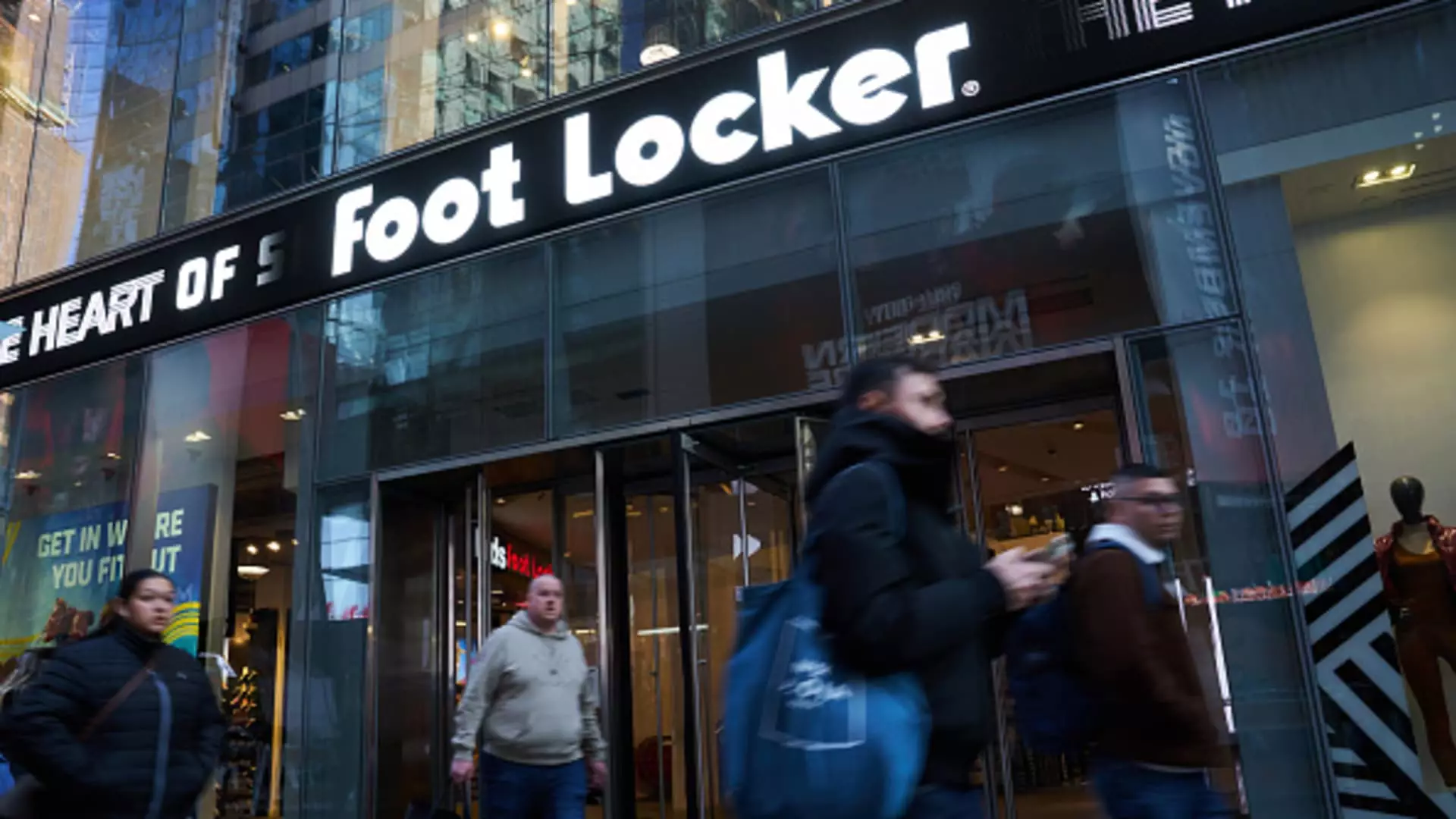Foot Locker recently announced encouraging results, marking a pivotal moment in its recovery efforts. For the first time in six quarters, the retailer experienced growth in comparable sales, indicating that its concerted efforts to revitalize its brand and improve customer engagement are taking effect. This development is particularly noteworthy in the retail landscape, where brands face increasing challenges from shifting consumer preferences and economic pressures. The company’s recent performance suggests a turning tide, driven by strategic initiatives led by CEO Mary Dillon.
Positive Financial Indicators and Market Response
During its fiscal second quarter, Foot Locker reported a 2.6% increase in same-store sales, surpassing analyst expectations that had predicted only a 0.7% rise. The company’s revenues also grew to $1.9 billion, up from $1.86 billion, revealing a solid operational turnaround. Despite these positive signs, market reactions were lukewarm, with Foot Locker’s stock dropping approximately 8% in premarket trading. This discrepancy highlights the cautious sentiment prevailing among investors, who may be weighing the company’s recovery against broader economic conditions and the retail sector’s volatility.
Under Dillon’s leadership, Foot Locker has embarked on a comprehensive turnaround strategy known as the “Lace Up Plan.” This initiative aims to refresh the brand by focusing on enhancing store experience and revitalizing relationships with key partners like Nike. Dillon highlighted that the company’s gradual transition is yielding tangible results—an indication that the strategic focus on customer experience is resonating with shoppers, particularly as they prepare for back-to-school spending.
Despite the promising growth, the company faces significant hurdles, particularly with its Champs Sports banner, which has seen improvements but is still lagging behind. The ongoing closures of stores in various international markets, including South Korea and Nordic countries, further illustrate the tough decisions the company is making in response to shifting demand patterns. These closures reflect a strategic shift toward a leaner operational model while aiming to retain market presence in impactful locations.
Store Refresh and E-commerce Strategy
Foot Locker has committed to investing $275 million in upgrading its retail locations, with plans to remodel two-thirds of its stores by fiscal 2025. These physical enhancements are intended to increase customer engagement and drive profitability. Dillon emphasized the correlation between store aesthetics, customer interaction, and sales conversion rates. As part of this strategy, the retailer is also strengthening its e-commerce platform to meet the growing trend of online shopping, indicating a balanced approach between physical and digital retail.
A Partnership for the Future
One of the standout aspects of Foot Locker’s revitalization plan is its renewed partnership with Nike. The incorporation of consumer insights to drive mutual growth showcases a progressive approach to brand collaboration, moving beyond mere transactional relationships. By co-developing flagship stores in urban hubs like New York City and Paris, Foot Locker aims to create immersive shopping experiences that resonate with today’s consumers—an essential factor for success in the competitive sneaker market.
Future Prospects: Navigating Economic Pressures
While Foot Locker’s recent gains are commendable, the backdrop of inflation and rising interest rates poses challenges for the retail sector. As economic pressures continue to squeeze consumer spending power, Foot Locker’s strategy revolves around maintaining relevance and addressing the needs of discerning shoppers. Dillon’s commitment to ensuring that the brand meets consumer needs amid adverse conditions indicates a proactive stance designed to navigate financial headwinds.
As Foot Locker moves forward, its ability to sustain momentum will depend on continuous innovation and adaptation to market trends. The combination of targeted store renovations, enhanced partnerships, and a focus on customer experience positions the company favorably in a challenging retail landscape. Though investor confidence might still be tentative, the company’s current trajectory suggests that Foot Locker is not just surviving but strategically positioning itself for a future of growth and sustainability—proving, once again, that resilience in retail comes from both reflection and action.

